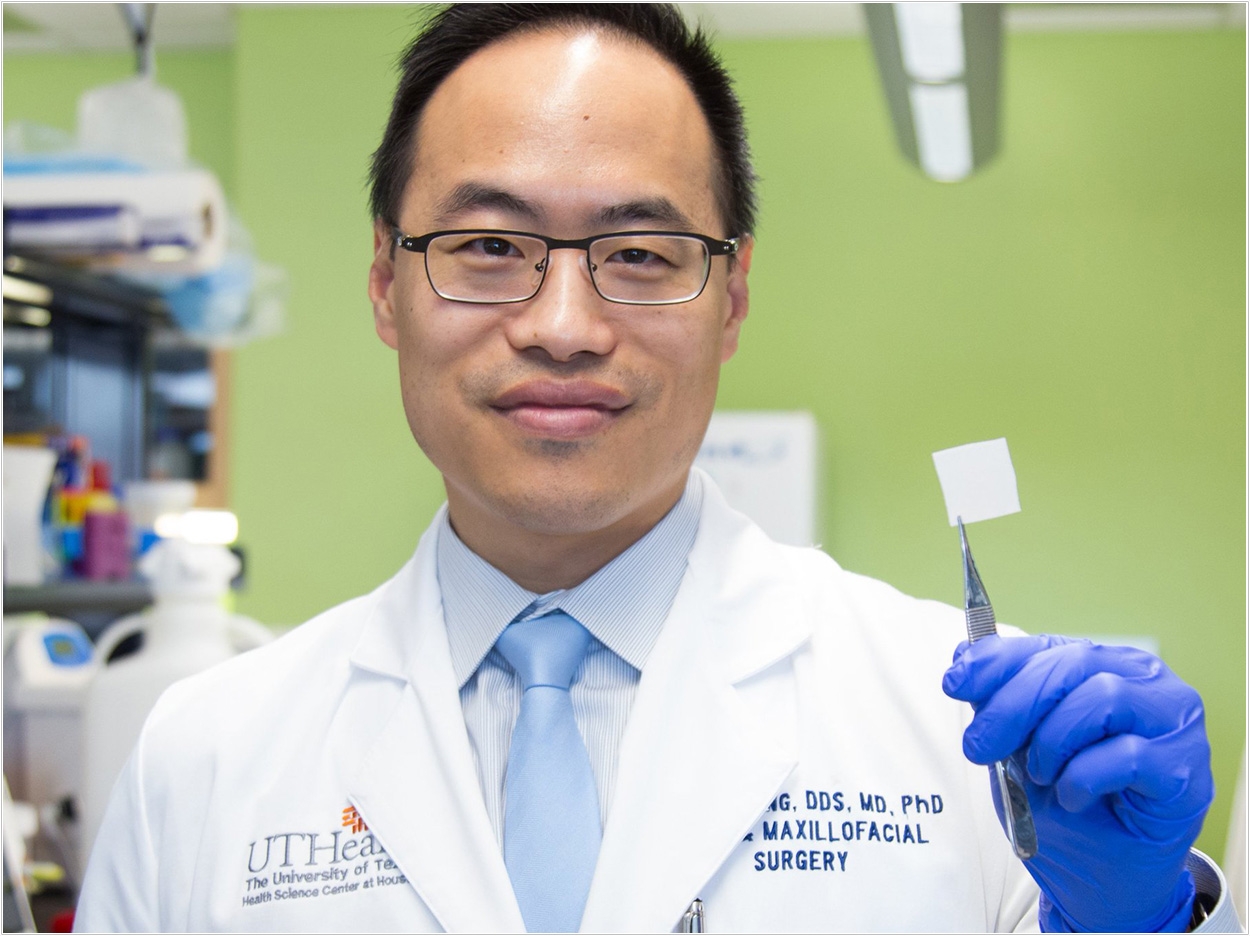
Oral surgeons at the UTHealth School of Dentistry at Houston are participating in a multicenter, phase one/phase two clinical trials of a drug-releasing patch designed to shrink oral cancer tumors prior to surgery.
“The holy grail of oral cancer care is to find a drug that makes it disappear permanently. We’re not there yet, but the entire field is making remarkable progress,” said Simon Young, DDS, MD, PhD, assistant professor in the Department of Oral and Maxillofacial Surgery.
Oral cavity squamous cell carcinoma (OCSCC) is a particularly deadly form of cancer with an overall five-year survival rate of about 50%, the school reports, adding that more than 51,000 people were diagnosed with cancer of the mouth and throat in 2018, with 10,000 deaths.
The tongue, gums, tonsils, floor of the mouth, and back of the throat are the most common sites for cancer, followed by the lips and salivary glands. Alcohol, tobacco, and the human papillomavirus are risk factors. Treatment includes surgery, radiation, and chemotherapy.
In the clinical trial, oral surgeons will apply a patch the size of a postage stamp including the cancer-killing drug cisplatin directly on the malignant growth. In all, 12 adhesive patches will be applied and removed during office visits in the three weeks leading up to surgery.
Privo Technologies designed the PRV111 patch to deliver a high concentration of cisplatin directly to the primary tumor with the goal of reducing the risk of the side effects that come with intravenous administration, such as nephrotoxicity and neurotoxicity.
“Because only a small percent of the medication goes in the bloodstream, we can significantly increase the dosage at the site of the tumor,” Young said.
The company also says that the local and regional effects of PRV111 will improve tumor resectability, decrease the need for postoperative radiation and chemotherapy, and improve patient survival.
Plus, Privo Technologies says, the organ-sparing therapy can preserve oral cavity form and function while improving locoregional disease control, which is the primary driver of disease-specific and overall survival in patients with the regional metastatic disease.
Enrollment has begun, and researchers hope to recruit about 30 patients. Some patients will receive 12 equal applications prior to the surgery. Others will start the same treatment schedule, but doctors may vary the dosage depending on their response. Six months after surgery, patient outcomes will be evaluated to check for possible side effects.
The study has been approved by the Food and Drug Administration as a combined safety and efficacy clinical trial. It also has been selected for the $3 million Phase IIB Bridge Award from the National Cancer Institute.
Related Articles
Head and Neck Cancer Patients Face Greater Opioid Addiction Risks
$1 Million Grant to Fight Oral Cancer in Kentucky
Oral Cancer Prognostic Signature Identified












